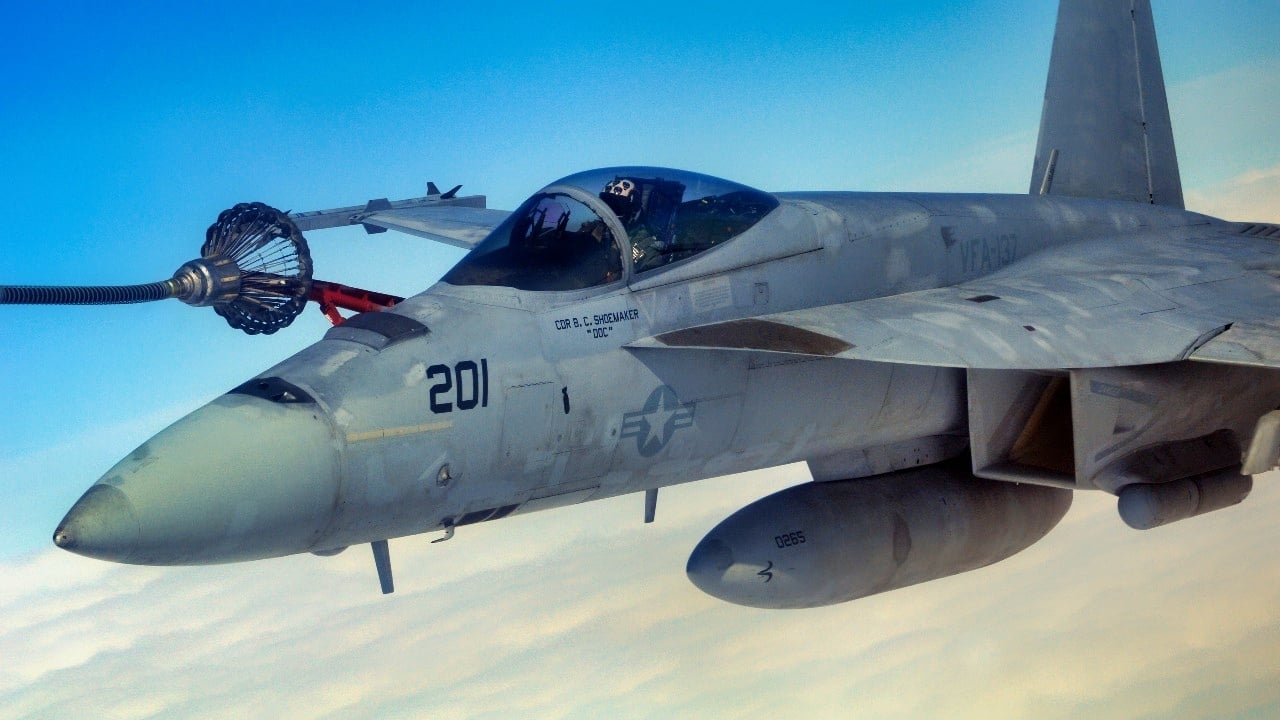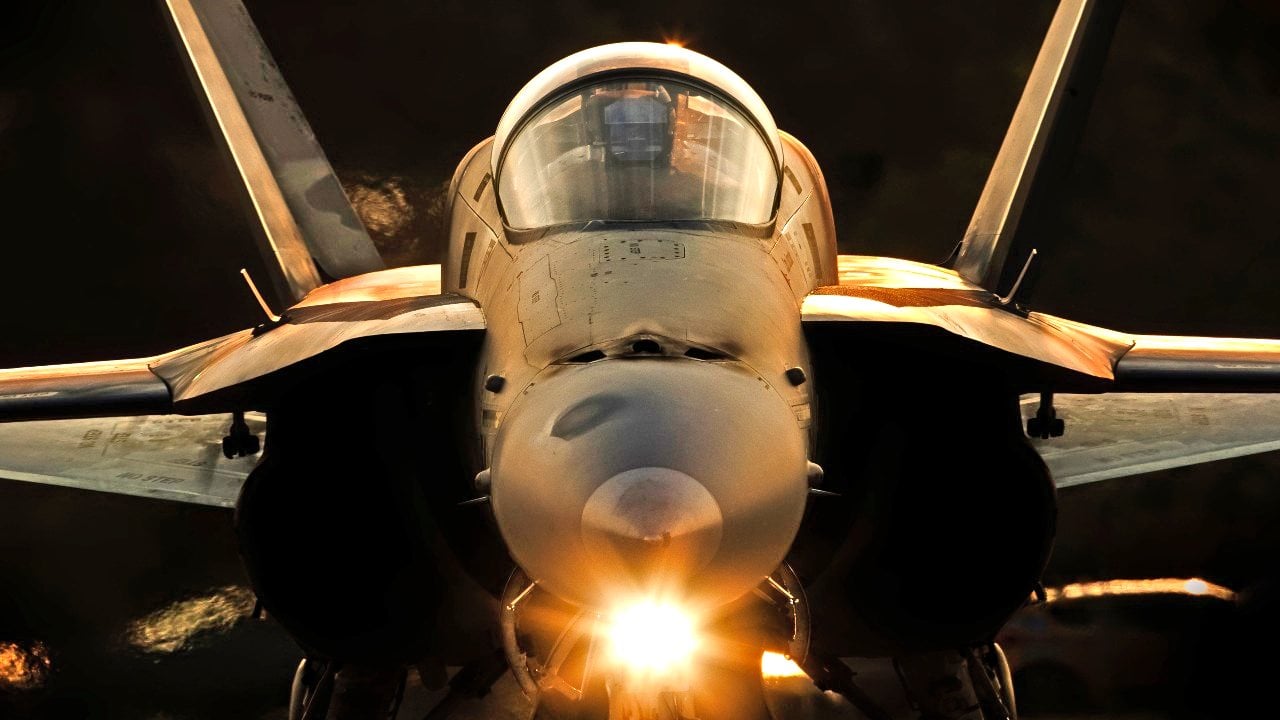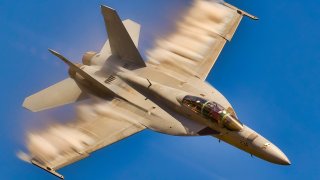The U.S. Navy's F/A-18 Hornet Fighter Was 'Ahead of Its Time'
The F/A-18, a fourth-generation fighter jet, is an enduring symbol of advanced aviation technology. Originally developed from the YF-17, which failed to win the Air Force's Lightweight Fighter (LWF) competition, the F/A-18 found new life when the Navy adopted and adapted it into a versatile aircraft.
Summary and Key Points: The F/A-18, a fourth-generation fighter jet, is an enduring symbol of advanced aviation technology. Originally developed from the YF-17, which failed to win the Air Force's Lightweight Fighter (LWF) competition, the F/A-18 found new life when the Navy adopted and adapted it into a versatile aircraft.

-Known for its agility, thrust-to-weight ratio, and ability to perform air-to-air and air-to-ground missions, the F/A-18 has evolved from the Hornet to the Super Hornet, serving as a critical asset for the U.S. Navy for over four decades.
F/A-18: The Fighter Jet That Almost Wasn't but Became a Legend
The fourth generation of fighter aircraft has been the most enduring and widely used. Fourth-generation aircraft first emerged in the 1970s and are still relevant today, even if they no longer represent the best of fighter jet technology.
One of the generation’s most iconic and prominent aircraft is the F/A-18, which recently starred alongside Tom Cruise in Top Gun: Maverick. But the F/A-18 almost never was. The airframe was developed from a bid that failed to impress the U.S. Air Force. Fortunately, the Navy saw great potential in a jet the Air Force had discarded.
The LWF Program
Before the F/A-18, there was the YF-17 – a prototype lightweight fighter built specifically to win the Air Force’s Lightweight Fighter (LWF) bid.
The LWF, as its name implies, was an effort to field a smaller, lighter, cheaper fighter in response to the belief that aircraft like the F-15 were too large and expensive for certain mission profiles. Two prototypes were considered: the single-engine YF-16, and the two-engine YF-17. The YF-16 won and became the venerable F-16 Fighting Falcon, so the program did work out, supplying the Air Force with an exemplary lightweight fighter that has been in service for almost 50 years. But the Air Force also passed on an exemplary lightweight fighter – a jet that caught the attention of the Navy, which had also been present to observe LWF testing.

The VFAX Program
The Navy also needed a small, cheap fighter, specifically to complement the large and expensive F-111, and to replace the aging F-4. The YF-17, the losing bidder from the Air Force’s LWF program, fit the bill.
The YF-17 was understood to be capable of meeting all of the Navy’s requirements, including air superiority performance, fleet air defense, escort attack, air to ground attack, long loitering time, long range, and an appropriate approach speed for carrier landings. The YF-17 hit all the right specifications, was redesigned to more perfectly match the Navy’s needs, and was redesignated as the F/A-18.
Introducing the F/A-18
The F/A-18 was ahead of its time, which is why the airframe is still relevant today, 45 years after taking its first flight. Well, the airframe was updated along the way, and the McDonnell Douglas F/A-18 Hornet has since become the Boeing F/A-18 Super Hornet, with the original Hornet being retired in 2019. But the Super Hornet shares much in common with the original airframe.
With two engines and a midwing design, the F/A-18 is capable of conducting a variety of mission sets. With a solid thrust-to-weight ratio and a digital fly-by-wire system, plus leading edge extensions, the F/A-18 is highly maneuverable. The trapezoidal wings are swept back 20 degrees and the vertical stabilizers are canted, enabling a high angle of attack in flight.
The F/A-18 has proven its worth in air-to-air and air-to-ground missions, and it has been the workhorse of the U.S. Navy for decades.
About the Author: Harrison Kass
Harrison Kass is a defense and national security writer with over 1,000 total pieces on issues involving global affairs. An attorney, pilot, guitarist, and minor pro hockey player, Harrison joined the US Air Force as a Pilot Trainee but was medically discharged. Harrison holds a BA from Lake Forest College, a JD from the University of Oregon, and an MA from New York University. Harrison listens to Dokken.
All images are Creative Commons and/or Shutterstock.


